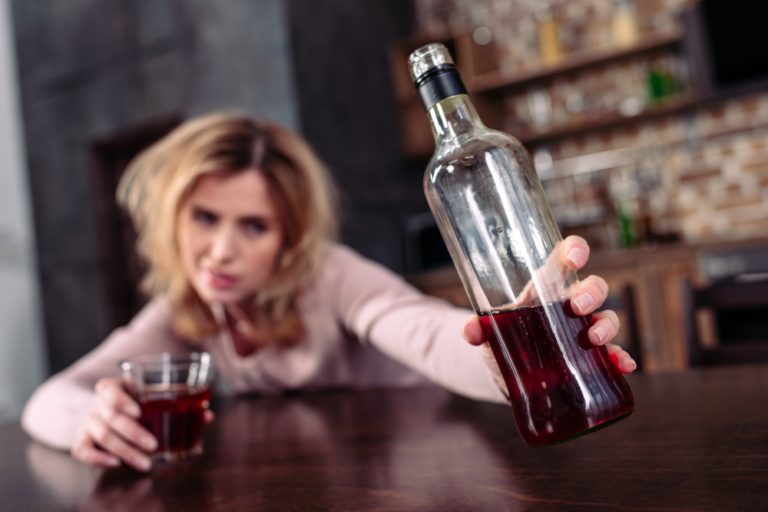To avoid relapse and remain sober, it’s important to develop healthy relationships. You may also need to change your route to work or home in order to avoid any triggers, or people, places, or things that make you want to use drugs or drink again. If PAWS is severe or if you’re experiencing prolonged symptoms, a medical professional can help you work through them and remain in recovery without relapse. The more tools you have for identifying triggers, coping with stress, and managing your new sober life, the easier you’ll prevent relapse. When cravings arise, practice mindfulness by acknowledging desires without acting on them. Techniques such as deep breathing can reduce anxiety and help navigate moments of temptation more effectively.
“Isn’t taking medications just trading one addiction for another?”
Here are ten harm reduction strategies if you struggle with alcohol misuse. If you’re ready to leave your addiction in the past, put your trust in our licensed and certified addiction therapists. We have more than 120 years of combined experience helping people just like you move past addiction. Personal growth through education or career development can significantly support long-term sobriety. It builds self-esteem, provides purpose, and creates new opportunities. SMART goals are Specific, Measurable, Achievable, Relevant, and Time-bound.

Using Your Relapse Prevention Plan
Clinicians can use SBI to identify adults who drink excessively and offer behavioral counseling to those who need it. Strictly speaking, sobriety is the state of being sober—not being under the influence of alcohol or drugs. However, alcoholism treatment the word is often used in different ways in different contexts. Many 12-step programs suggest that sobriety means total abstinence, which means never using the substance again. Other definitions, however, focus on the process of recovery and coping habits that support health and wellness over the long term.
Education about alcohol, its effects and the consequences of alcohol addiction can be used as a harm reduction method to motivate you to make different choices related to your alcohol use. You may not currently understand how alcohol interacts with the brain and body or how alcohol use disorder (AUD) affects your relationships, career, family and overall wellbeing. Brief interventions may be used to reduce your drinking if you have less severe alcohol misuse behaviors and cannot receive specialty treatment at an alcohol rehab center. These interventions are usually conducted by trained interventionists over one to four brief counseling sessions that last between 5 and 30 minutes.
- A health care provider can look at the number, pattern, and severity of symptoms to see whether AUD is present and help you decide the best course of action.
- Studies show that strong family support through family therapy increases the chances of maintaining abstinence (not drinking) compared with people going to individual counseling.
- 2007 research shows that continued therapy significantly improves long-term sobriety rates.
E-Health Alcohol Treatment Tools*

These medications are prescribed by a primary care provider or other health care provider and may be used alone or in combination with counseling. “Recovering alcoholics need to recognise what situations, emotions, or people might trigger cravings,” de Souza Lage said. Common triggers include stress, specific social environments, negative emotions, or particular times of day. By identifying these, individuals can develop proactive strategies to navigate high-risk situations. “Most relapses happen when people are caught off-guard by unexpected triggers.
- Every month, 150,000 people search for addiction or mental health treatment on Recovery.com.
- Common risk factors related to a person’s genes, individual characteristics, social and family environment, and other life circumstances can contribute to both substance use and other mental disorders.
- In this post, we will explore the recovery strategies that work best for sustained sobriety.
- Education about alcohol, its effects and the consequences of alcohol addiction can be used as a harm reduction method to motivate you to make different choices related to your alcohol use.
Recommendations for health care settings
Treatment for alcohol use disorder (AUD) varies and may include behavioral therapies, medications like naltrexone or acamprosate, and support group involvement. Programs such as Alcoholics Anonymous offer peer support, while cognitive behavioral therapy helps address thought patterns related to drinking. Engaging with these options can significantly enhance the likelihood of successful behavior change.

Seek Professional Guidance
Identifying the specific triggers that lead to the urge to drink is an essential step in managing alcohol consumption. Common triggers can include stress from work, specific social situations, or emotional states like sadness or boredom. Keeping a diary of experiences around drinking can help pinpoint these moments.
Role of Friends, Family, and Professionals
- It’s crucial in recovery as it helps maintain balance and prevent burnout.
- In the early days, you pick your battles and keep trudging forward, which is what this list is all about – my ceaseless mission to stay the course and never get complacent.
- To avoid relapse and remain sober, it’s important to develop healthy relationships.
- Many others substantially reduce their drinking and report fewer alcohol-related problems.
Repairing and strengthening family relationships is often a crucial part of the recovery process. By Buddy TBuddy T is a writer and founding member of the Online Al-Anon Outreach Committee with decades of experience writing about alcoholism. Because he is a member of a support group that stresses the importance of anonymity at the public level, he does not use his photograph or his real name on this website. Although these new activities are healthy and productive, they can be a stumbling block to lasting recovery if they become a transfer addiction to fill the void left by the original addiction. A structured routine will help you achieve other goals in your life, whether they are short-term (like being on time for work) or long-term (like going back to school and changing careers). Research shows that if you maintain these types of toxic relationships, your chances of relapsing are greater.
While relapse is a normal part of recovery, for some drugs such as opioids it can be very dangerous or even deadly. If a person uses as much of the drug as they did before quitting, https://puncak77slot.net/actors-who-tragically-passed-away-from-overdoses/ they can more easily overdose because their bodies are no longer used to their previous level of drug exposure. An overdose happens when the person uses enough of a drug to cause life-threatening symptoms or death. Understanding the available treatment options—from behavioral therapies and medications to mutual-support groups—is the first step.
NHS Mental Health Care Lags a Generation Behind Physical Treatments, Campaigner Warns
Alcoholics Anonymous® (also known as “AA”) and other 12-step alcoholism programs provide peer support for people quitting or cutting back on their drinking. Combined with treatment led by health care providers, mutual-support groups can offer a valuable added layer of support. Recent conceptualizations of the term ‘recovery’ have shifted to emphasize the broader biopsychosocial process of improvement that is related to, but not solely determined by, alcohol consumption.